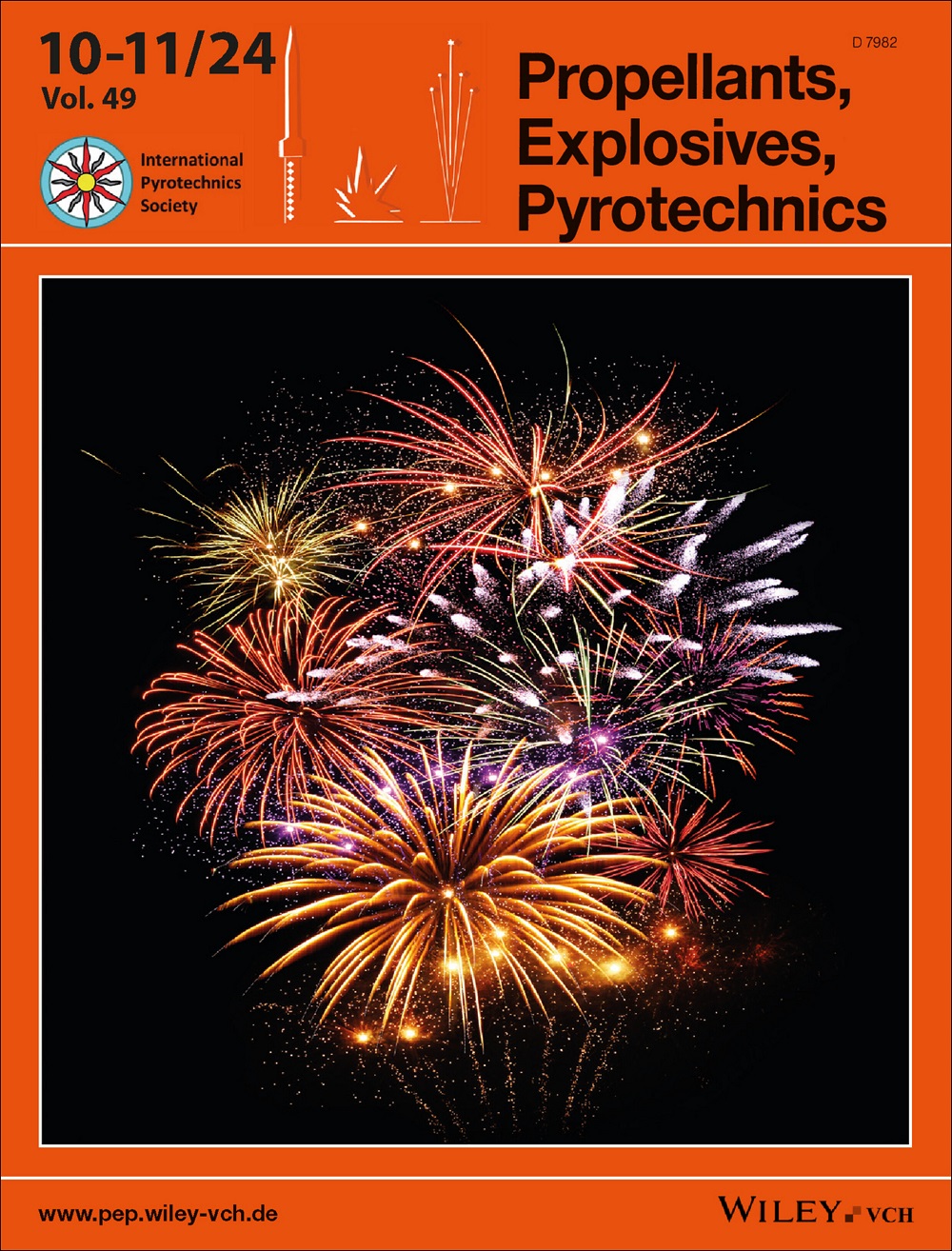Formulation of Hexamine‐based Fuels for Hybrid Rockets
IF 2
4区 工程技术
Q3 CHEMISTRY, APPLIED
引用次数: 0
Abstract
Hybrid rockets have many attractive properties but have not yet been used in any high performance applications, mainly due to the low regression rate of the solid fuels used. In this work, a number of crystalline organic fillers were assessed with the aim to increase the regression rate and density of HTPB‐based fuels. Hexamine, which was the most promising filler, catalyses the HTPB/isocyanate crosslinking reaction leading to unacceptable short pot life. However, it was found that the pot life could be substantially prolonged by the use of less reactive brands of HTPB, added plasticizer and reduced NCO/OH ratio. Fuel formulations containing 75 % hexamine were easy to cast and the cured slabs were of good quality, free from bubbles or voids, with a density 30 % higher than plain HTPB. The tensile strength of the fuels were similar to typical solid propellants but the elasticity might need to be improved. Hexamine decompose at substantially lower temperature than HTPB. This, and its high density, makes it promising for use in hybrid rocket fuels.为混合火箭配制六胺基燃料
混合火箭具有许多吸引人的特性,但尚未在任何高性能应用中使用,这主要是由于所使用的固体燃料回归率较低。在这项工作中,对一些晶体有机填料进行了评估,目的是提高基于 HTPB 的燃料的回归率和密度。六胺是最有前途的填料,但它会催化 HTPB/异氰酸酯交联反应,导致无法接受的较短罐装寿命。但研究发现,通过使用反应性较低的 HTPB 品牌、添加增塑剂和降低 NCO/OH 比率,可以大大延长固化寿命。含有 75% 六胺的燃料配方很容易浇注,固化后的板坯质量很好,没有气泡或空隙,密度比普通 HTPB 高 30%。燃料的拉伸强度与典型的固体推进剂相似,但弹性可能需要改进。六胺的分解温度远低于 HTPB。这一点以及它的高密度使其有望用于混合火箭燃料。
本文章由计算机程序翻译,如有差异,请以英文原文为准。
求助全文
约1分钟内获得全文
求助全文
来源期刊

Propellants, Explosives, Pyrotechnics
工程技术-工程:化工
CiteScore
4.20
自引率
16.70%
发文量
235
审稿时长
2.7 months
期刊介绍:
Propellants, Explosives, Pyrotechnics (PEP) is an international, peer-reviewed journal containing Full Papers, Short Communications, critical Reviews, as well as details of forthcoming meetings and book reviews concerned with the research, development and production in relation to propellants, explosives, and pyrotechnics for all applications. Being the official journal of the International Pyrotechnics Society, PEP is a vital medium and the state-of-the-art forum for the exchange of science and technology in energetic materials. PEP is published 12 times a year.
PEP is devoted to advancing the science, technology and engineering elements in the storage and manipulation of chemical energy, specifically in propellants, explosives and pyrotechnics. Articles should provide scientific context, articulate impact, and be generally applicable to the energetic materials and wider scientific community. PEP is not a defense journal and does not feature the weaponization of materials and related systems or include information that would aid in the development or utilization of improvised explosive systems, e.g., synthesis routes to terrorist explosives.
 求助内容:
求助内容: 应助结果提醒方式:
应助结果提醒方式:


